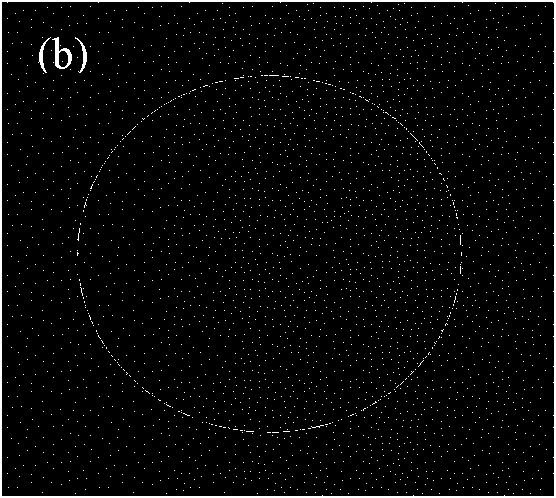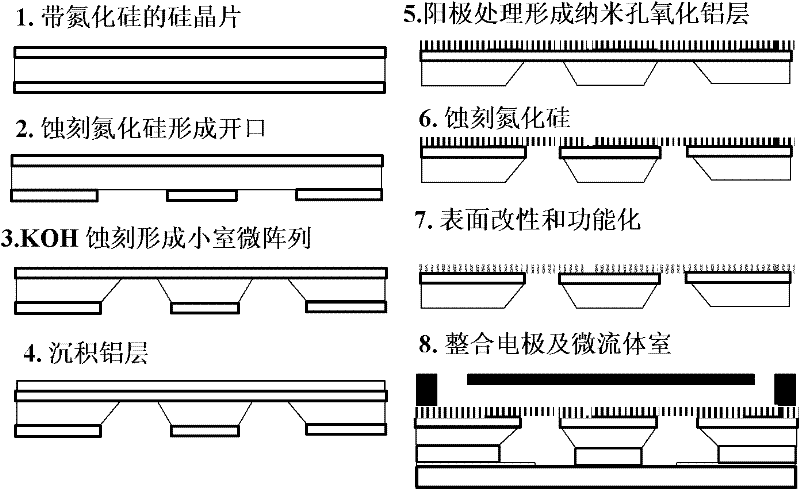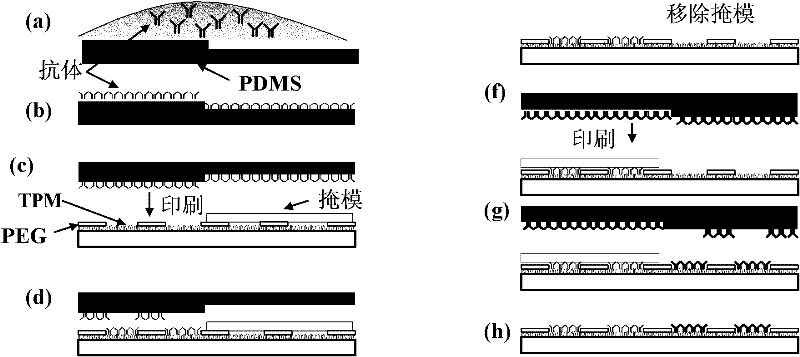Chip and bacterium analysis instrument for food safety detection
A food safety and chip technology, applied in analytical materials, instruments, measuring devices, etc., can solve the problems of low specificity, low sensitivity, low sensitivity, etc., and achieve the effects of enhanced adhesion, high detection sensitivity, and improved adsorption capacity.
- Summary
- Abstract
- Description
- Claims
- Application Information
AI Technical Summary
Problems solved by technology
Method used
Image
Examples
Embodiment Construction
[0035] The present invention will be described in detail below in conjunction with the manufacturing method of the chip of the present invention.
[0036] figure 1 It is a flowchart of the manufacturing method of the chip of this invention. Such as figure 1 as shown,
[0037] Step 1: Silicon Nitride (Si 3 N 4 ) silicon wafer as the initial material, with one side of the silicon nitride layer as the top of the silicon wafer, and the other side as the bottom.
[0038] Step 2: Etching the silicon nitride layer under the silicon wafer to form openings for the cells.
[0039] Step 3: The silicon layer penetrating the silicon wafer is then etched using potassium oxide (KOH) solution as a wet etchant. Preferably, KOH etches the crystal plane , forming a "V" shaped groove.
[0040] Step 4: A layer of aluminum is sputtered on the silicon nitride layer above the silicon wafer.
[0041] Step 5: Under the condition of direct current and constant voltage, the nanoporous aluminum ox...
PUM
 Login to View More
Login to View More Abstract
Description
Claims
Application Information
 Login to View More
Login to View More - R&D
- Intellectual Property
- Life Sciences
- Materials
- Tech Scout
- Unparalleled Data Quality
- Higher Quality Content
- 60% Fewer Hallucinations
Browse by: Latest US Patents, China's latest patents, Technical Efficacy Thesaurus, Application Domain, Technology Topic, Popular Technical Reports.
© 2025 PatSnap. All rights reserved.Legal|Privacy policy|Modern Slavery Act Transparency Statement|Sitemap|About US| Contact US: help@patsnap.com



